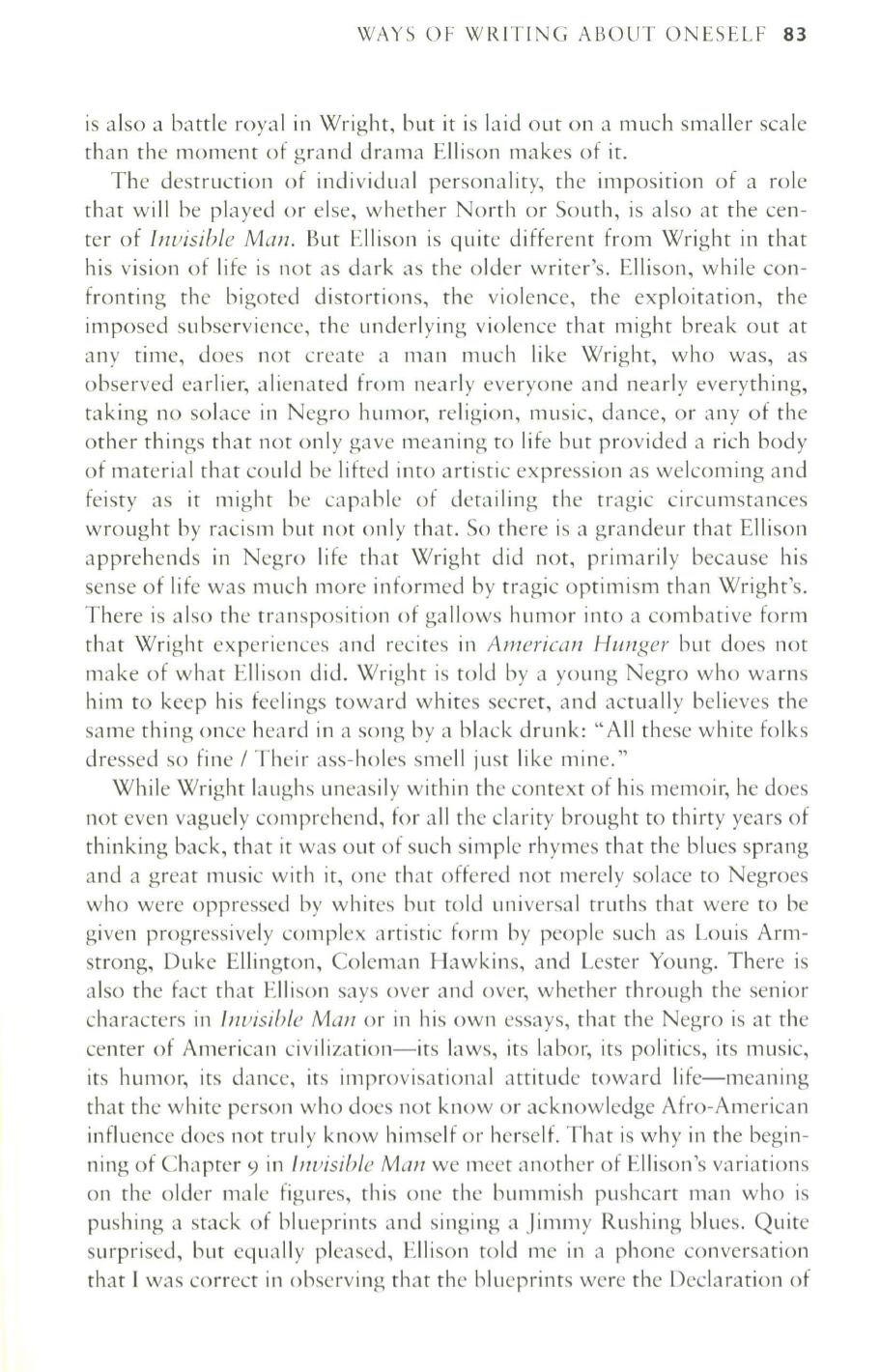
WAYS OF WRITING ABOUT ONESELF
83
is also a battle royal in Wright, but it is laid out on a much smaller scale
than the moment of grand drama Ellison makes of it.
The destruction of individual personality, the imposition of a role
that will he played or else, whether North or South, is also at the cen–
ter of
Invisihle Man.
But Ellison is quite different from Wright in that
his vision of life is not as dark as the older writer's. Ellison, while con–
fronting the bigoted distortions, the violence, the exploitation, the
imposed subservience, the underlying violence that might break out at
any time, does not create a man much like Wright, who was, as
observed earlier, alienated from nearly everyone and nearly everything,
taking no solace in Negro humor, religion, music, dance, or any of the
other things that not only gave meaning to life but provided a rich body
of material that could be lifted into artistic expression as welcoming and
feisty as it might be capable of detailing the tragic circumstances
wrought by racism but not only that. So there is a grandeur that Ellison
apprehends in Negro life that Wright did not, primarily because his
sense of life was much more informed by tragic optimism than Wright'S.
There is also the transposition of gallows humor into a combative form
that Wright experiences and recites in
American Hunger
but does not
make of what Ellison did. Wright is told by a young Negro who warns
him to keep his feelings toward whites secret, and actually believes the
same thing once heard in a song by a black drunk: "All these white folks
dressed so fine / Their ass-holes smell just like mine."
While Wright laughs uneasily within the context of his memoir, he does
not even vaguely comprehend, for all the clarity brought to thirty years of
thinking back, that it was out of such simple rhymes that the blues sprang
and a great music with it, one that offered not merely solace to Negroes
who were oppressed by whites but told universal truths that were
to
be
given progressively complex artistic form by people such as Louis Arm–
strong, Duke Ellington, Coleman Hawkins, and Lester Young. There is
also the fact that Ellison says over and over, whether through the senior
characters in
Invisible Man
or in his own essays, that the Negro is at the
center of American civilization-its laws, its labor, its politics, its music,
its humor, its dance, its improvisational attitude toward life-meaning
that the white person who does not know or acknowledge Afro-American
influence does not truly know himself or herself. That is why in the begin–
ning of Chapter 9 in
Invisible Man
we meet another of Ellison's variations
on the older male figures, this one the bummish pushcart man who is
pushing a stack of blueprints and singing a Jimmy Rushing blues. Quite
surprised, but equally pleased, Ellison told me in a phone conversation
that I was correct in observing that the blueprints were the Declaration of


